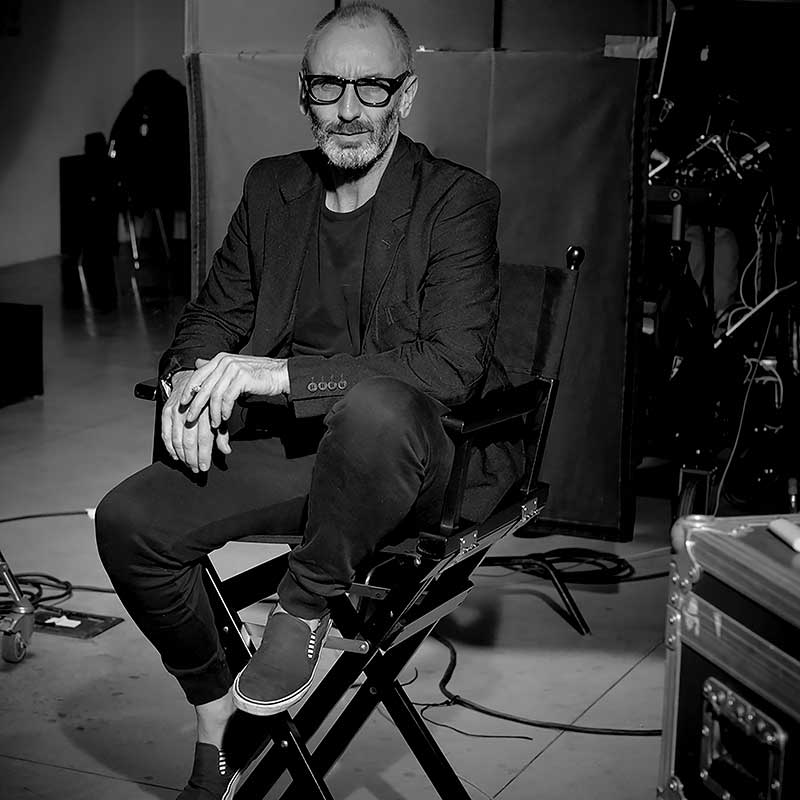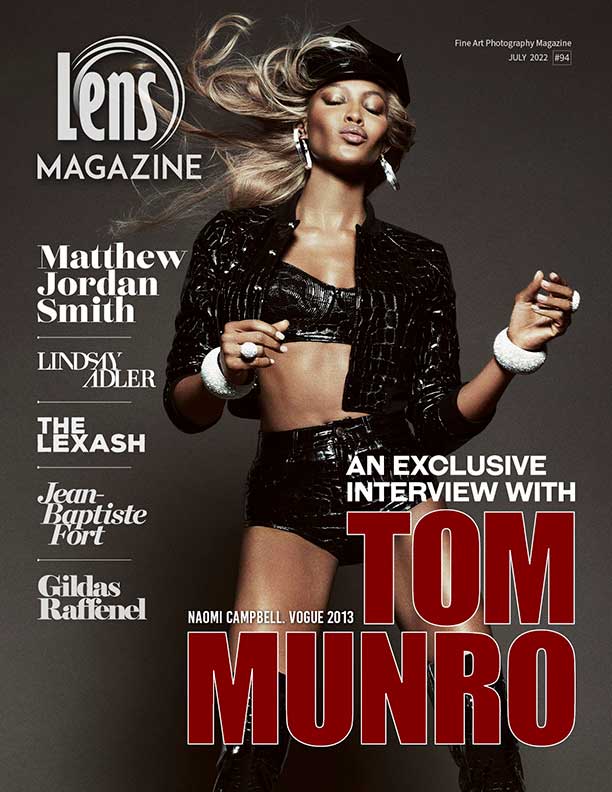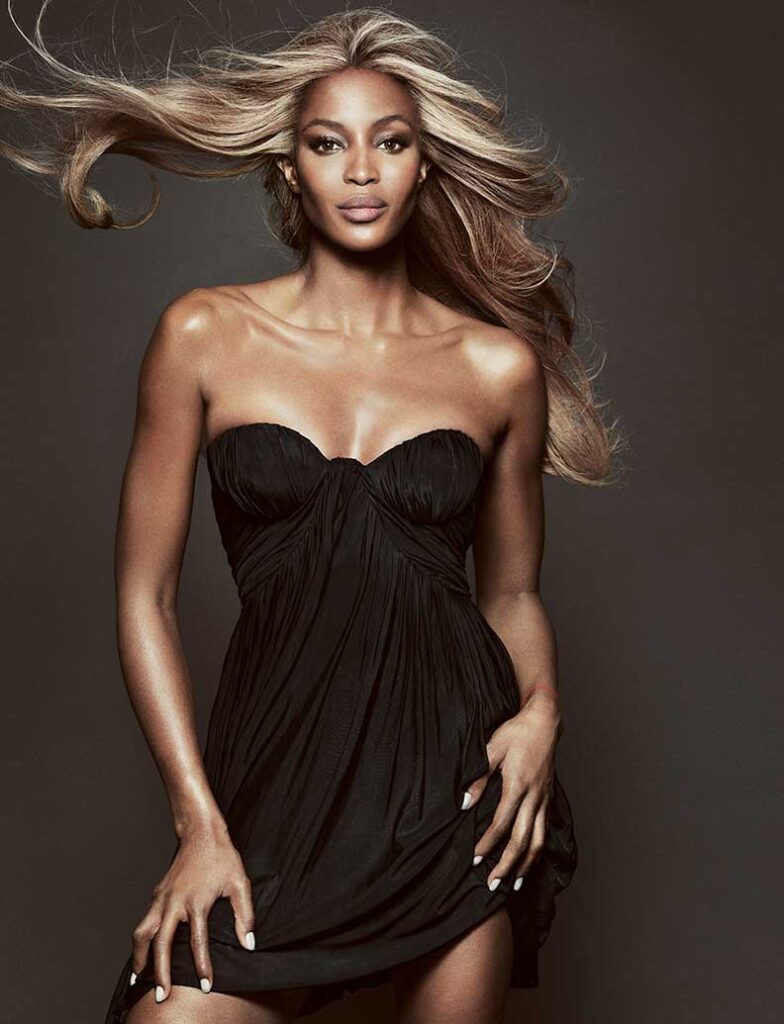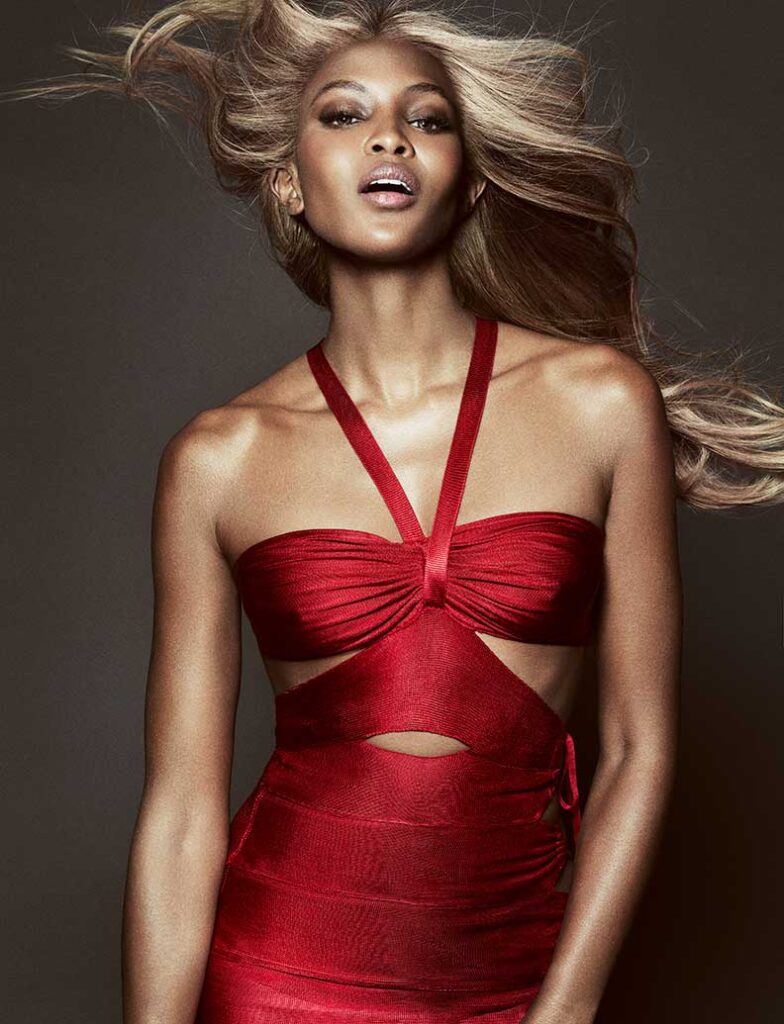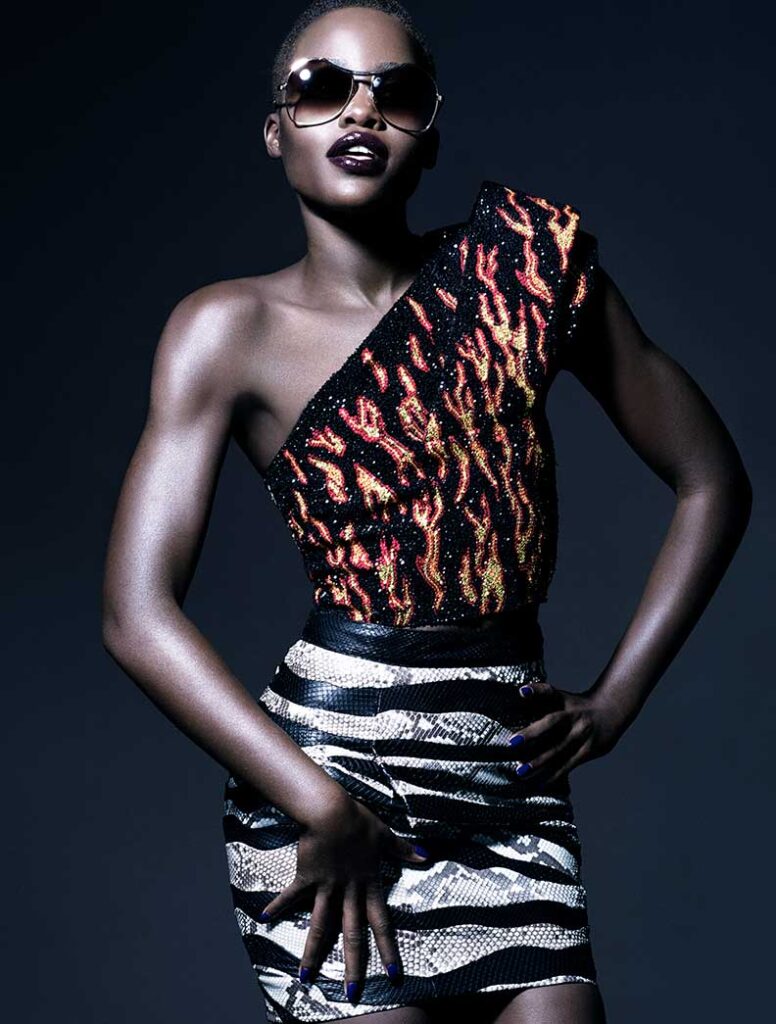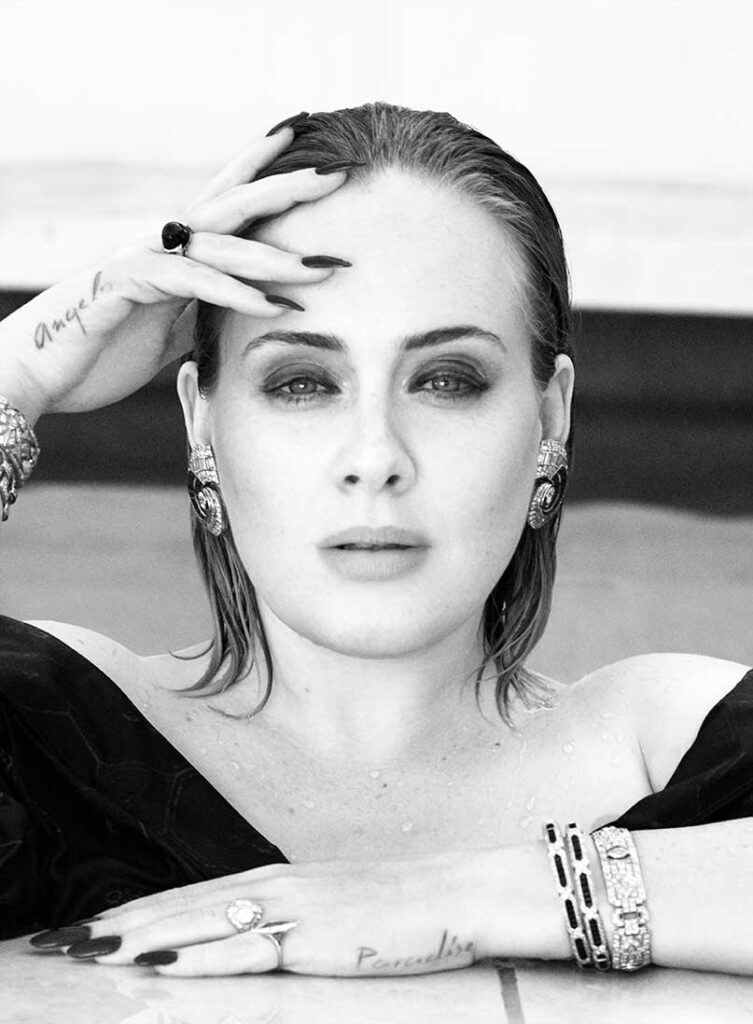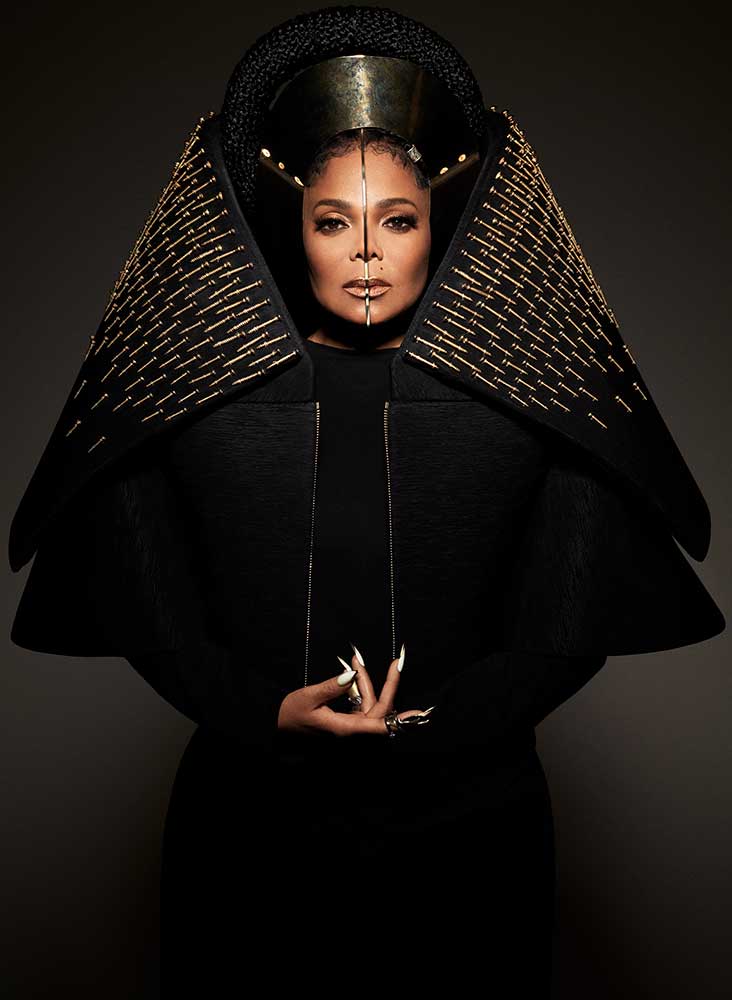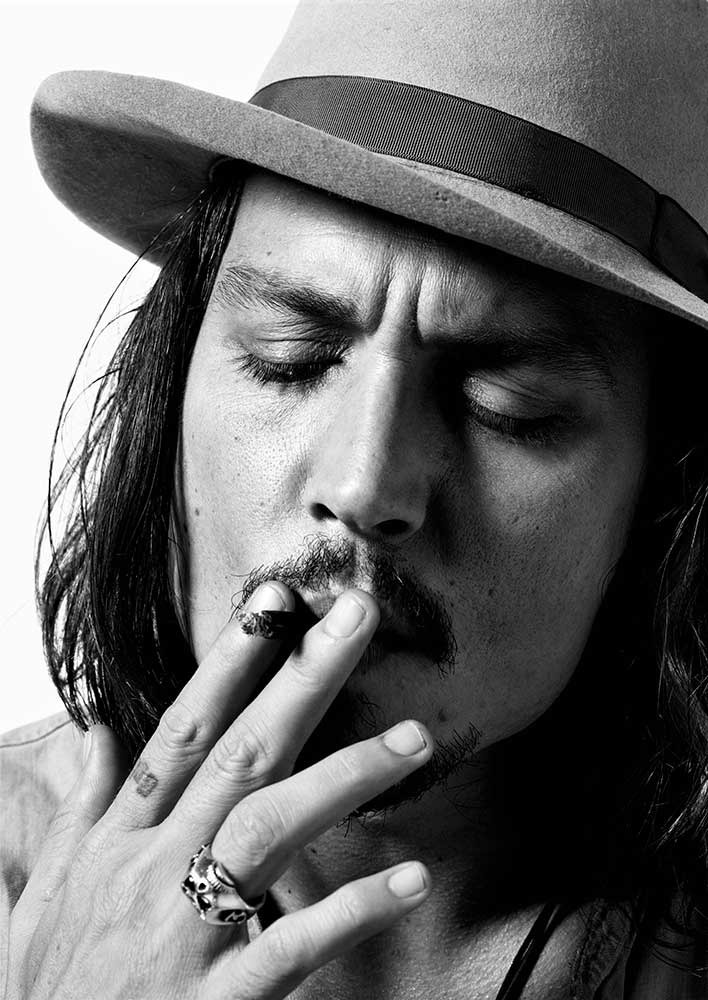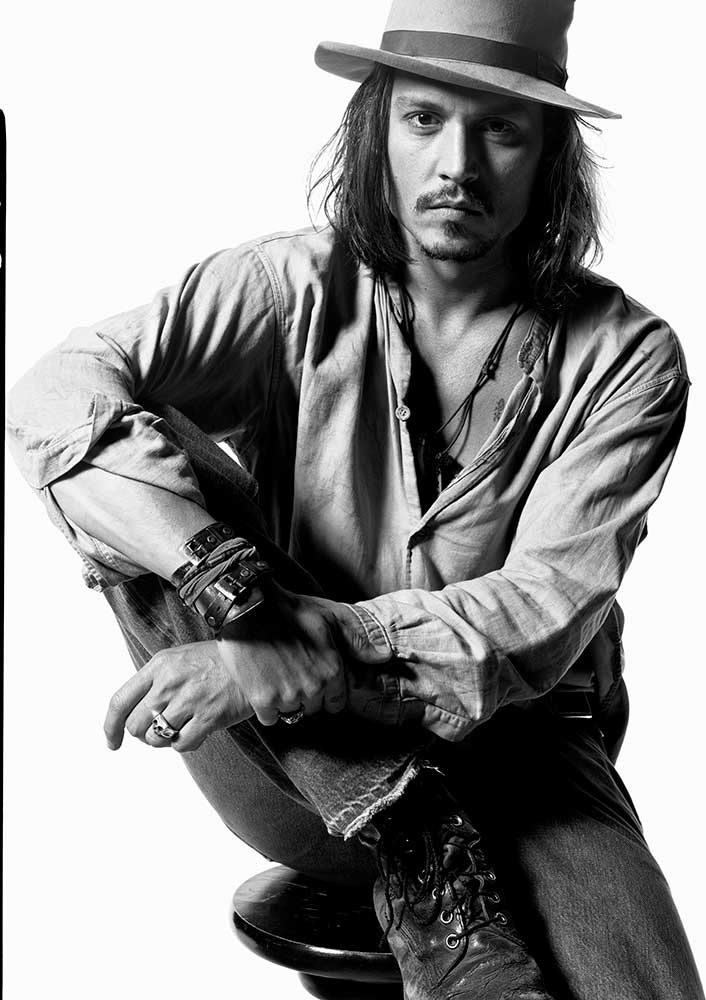An Exclusive Interview With
A legendary fashion photographer
TOM MUNRO
By Dafna Navarro
“Dealing with this success that kind of happened overnight was, as times, challenging, particularly for an introvert, because suddenly there was a lot of interest, a lot of attention, which was all very new to me”.
– Tom Munro
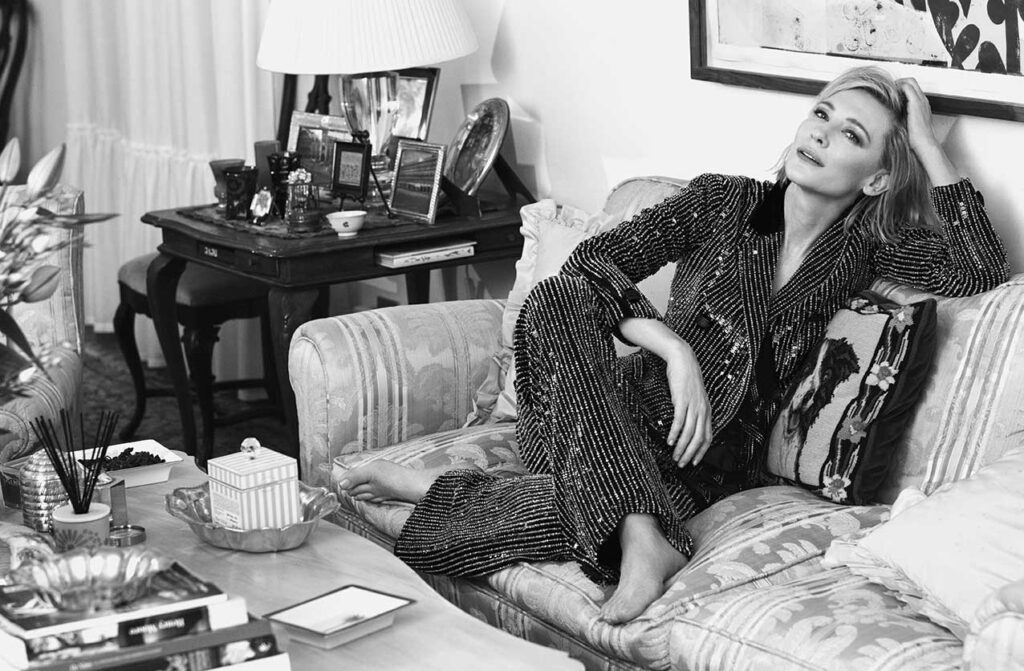
Tom Munro Studio © All rights reserved.
We are incredibly excited, and it’s a great pleasure to feature an interview with TOM MUNRO, one of the most influential photographers of our generation. His story exemplifies determination and inspires young photographers from all over the globe.
After shooting for the world’s most prestigious brands and having seen his work on magazines covers and on Times Square’s billboards, he took his skills and knowledge to the next level by directing music videos with Madonna, a successful collaboration that made a mark in the whole film, fashion, and music industry and led to further films including commercials for Giorgio Armani’s Si’ fragrance starring Cate Blanchett, Dolce and Gabbana’ Wild about Fall,’ Tom Ford’ Lips and Boys.
More recently, during a lockdown, Tom shot & directed Breitling’s launch of their first female-only Spotlight Squad campaign, ‘Chronomat.’ Directed over the internet from London on three separate occasions in three different time zones, Charlize Theron in Los Angeles, Misty Ponte in New York, and Yao Chen in Beijing. Not a small challenge, given the three women, were later brought together in the edit room to appear as if they were in the same studio, on the same set, at the same time.
Giorgio Armani’s ‘Prive’ fragrance campaign with Jackson Yee was also directed & shot over the internet, with Tom in London and Jackson Yee in China.
Tom Munro Studio © All rights reserved.
“I remember when I first told my father I wanted to be a photographer; he thought it wasn’t a smart idea and that I’d be better off doing what he did or something similar, to choose a more secure profession”.
– Tom Munro
In the early 1990s, Tom moved from London to New York to study at the prestigious Parsons School of Design.
While still working as an assistant in New York in 1996, Franca Sozzani of Vogue Italia took Tom under her wing, with covers and editorials for Italian Glamour and later for L’Uomo Vogue and Vogue Italia.
Munro embarked on his own photographic career in January 1997, while signing with his first agent in January 1997, shooting his first editorial for British Vogue just three months later, in March 1997. A run of Vogue covers soon followed, with Kate Moss, Naomi Campbell, Stella Tennant, and Nicole Kidman. These caught the attention of Liz Tilberis at Harpers Bazaar U.S. In September 1997, Tom found himself in Milan shooting his first collection story for the publication. He’d already shot two collection stories for British Vogue.
Within three short years, by 2000, Tom was shooting for Anna Wintour at Vogue U.S.
His dedication and passion for his craft has attracted the industry’s leading designers and brands, such as Armani, Dolce & Gabbana, Givenchy, Guerlain, Saint Laurent, and Tom Ford.
For over two decades, Tom has contributed to publications Vanity Fair, Vogue, Vogue Italia, L’Uomo Vogue, V, and W, as well as other prestigious publications such as Elle International and Harpers Bazaar U.S.
Collaborating with stars Adele, Angelina Jolie, Beyonce, Cate Blanchett, Dustin Hoffman, Eva Green, Johnny Depp, Joaquin Phoenix, Julia Roberts, Julianne Moore, Justin Timberlake, Kate Winslet, Lady Gaga, Leonardo Di Caprio, Lily-Rose Depp, Madonna, Marion Cotillard, Nicole Kidman, Rihanna, Tom Cruise and Scarlett Johansson, to name a few, he is well known for his celebrity portraiture.
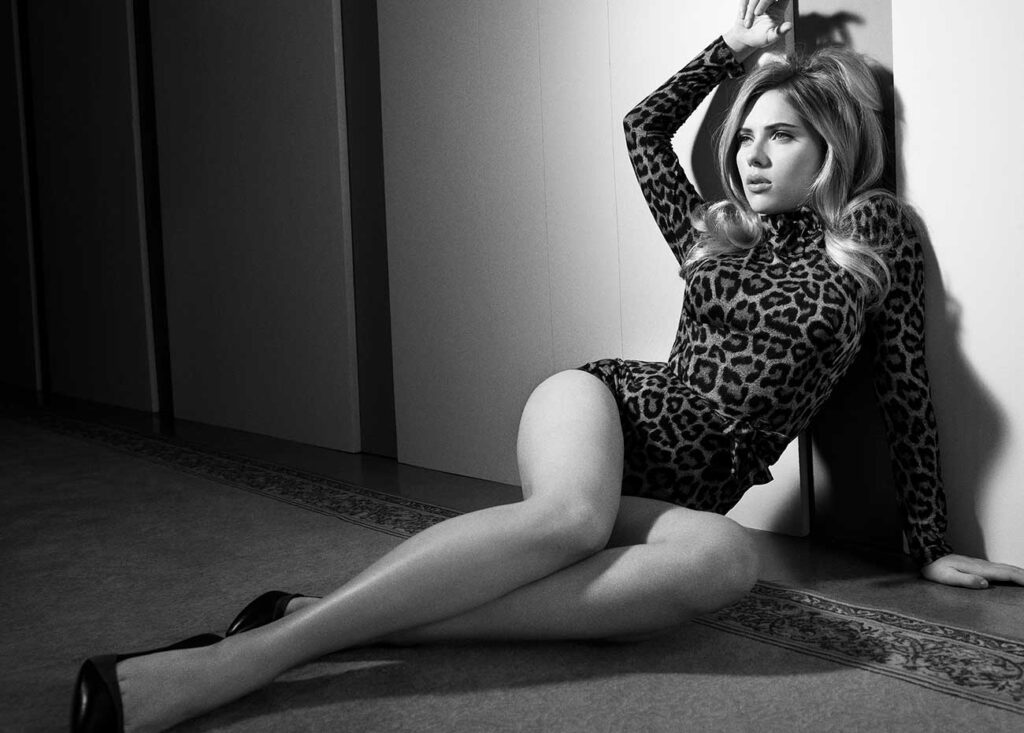
Tom Munro Studio © All rights reserved.
Tom started directing films in 2008, his directorial debut being a collaboration with Madonna on the music video ‘Give it to me’ featuring Pharrell Williams. This, in turn, led to further film projects and numerous photographic collaborations with the ‘Queen of Pop,’ as well as shooting her tour book “Sticky & Sweet.”
Subsequently, Tom has directed films and television commercials for Giorgio Armani’s ‘Si’ fragrance starring Cate Blanchett, Dolce and Gabbana’ Wild about Fall,’ Tom Ford’ Lips, and Boys’ Lancome’ Renergie’ starring Kate Winslet and most recently Priyanka Chopra Jonas for Max Factor.
After 20 years based in Manhattan, he returned to London in 2015, where he now lives and works.
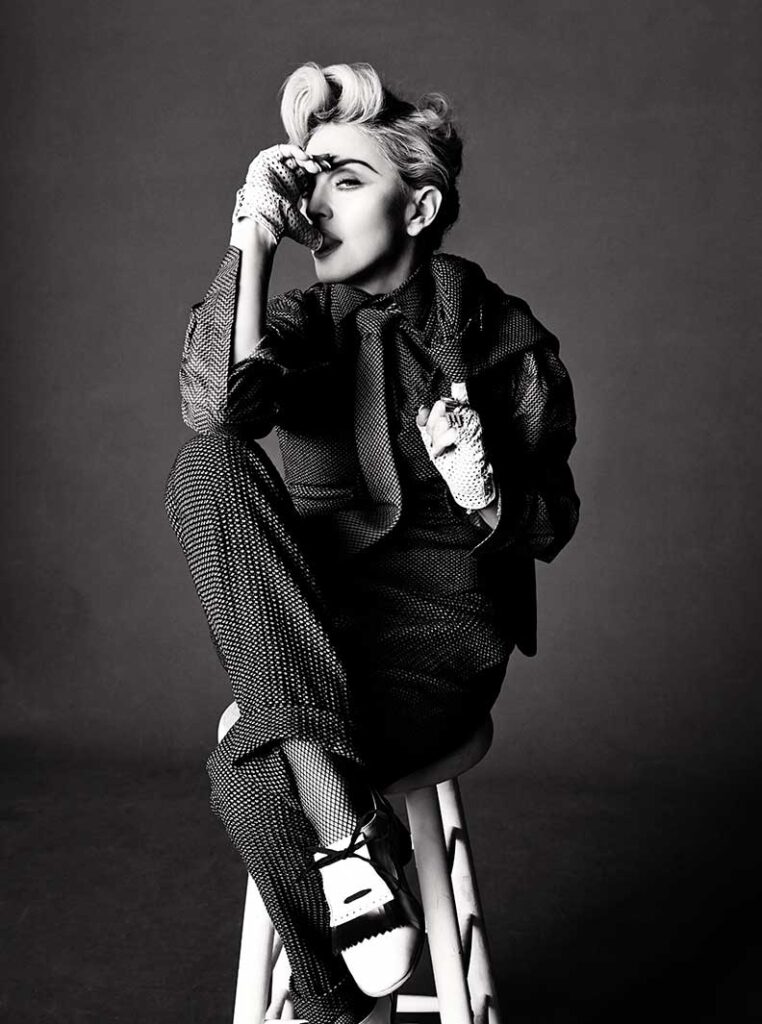
Tom Munro Studio © All rights reserved.
Dafna Navarro: Thank you, Tom, for taking the time to have this interview. It doesn’t happen much that I personally do the interview, but this time, I just couldn’t resist the temptation to speak with such an important, inspiring, and influential photographer! Looking back at your 25-year career, do you feel you’ve accomplished all of your goals?
Tom Munro: I was already 32 when I started shooting professionally. I don’t think I had a specific goal other than there wasn’t time for yet another career change. I just had to make it work. I was very determined and ambitious.
As the saying goes, “being a photographer is a way of life,” more than being a job, and this has been my experience. It’s who I now am (a photographer), what I’ve become, and intend to remain for as long as possible. It’s my life.
I’ve ticked a lot of boxes on the way. I think for me, in the beginning, everything happened so quickly that
I didn’t really have time to think about it all. One minute I was an assistant, and the next minute I was a Vogue photographer; this change literally happened in weeks. There wasn’t a list of goals. Everything just happened.
I feel pretty blessed and grateful for the life I’ve had so far, and of course, its ups and downs, but there’s more to do.
Tom Munro Studio © All rights reserved.
Dafna Navarro: What led you to the art and photography field?
Was there a strong influence from your family side? Did you grow up in an artistic environment?
Tom Munro: There is no blue blood but certainly creative blood in the Munro family. When we were all young, our mother was a keen & locally admired amateur actor (they say they could have been professional). Throughout her life, Mum had a real flair for finding and restoring old houses (of which over the decades, there were many), created & ran three successive restaurants, given she was a pretty good cook, a keen gardener, and enjoyed creating her modest paintings which she continued to create until her untimely death from Corona Virus.
My older sister is a talented painter, and my younger sister is an Integrative Arts Psychotherapist MA, U.K.C.P., H.C.P.C., as well as being a good photographer herself.
Our father was (and occasionally still is) a Country Agent & Auctioneer selling houses, farms, antiques, and Livestock. So we lived, and I grew up in that environment, fortunately with a father who taught me from a young age to appreciate architecture, form and scale, interesting and important details, and the various architectural periods.
The Cambridge prep school I went to was the choir school to one of the city’s famous colleges, St. Johns College, with a magnificent medieval chapel to which we boarders would go every Sunday morning and in which the chorister’s ethereal voices shone, the beauty of which gave me goose pimples. Music was an important part of the school’s D.N.A., and it was necessary to learn at least two instruments, trumpet, and violin in my case, all of which I forgot long ago.
I remember when I first told my father I wanted to be a photographer; he thought it wasn’t a smart idea and that I’d be better off doing what he did or something similar, to choose a more secure profession.
I studied art history and, of course, photography. In my late teens, I started buying photography books and magazines, especially Vogue Italia, so I guess much comes from your childhood as you digest and accumulate information, subconsciously creating a visual image bank. Years later, as time progressed and I started to shoot regularly, I built an archive of art and photography books and movies, many of which I used for inspiration. I used to watch films and create little storyboards. Then, when my schedule was tight,
I would fast forward through the films looking for the right frames that gave me inspiration.
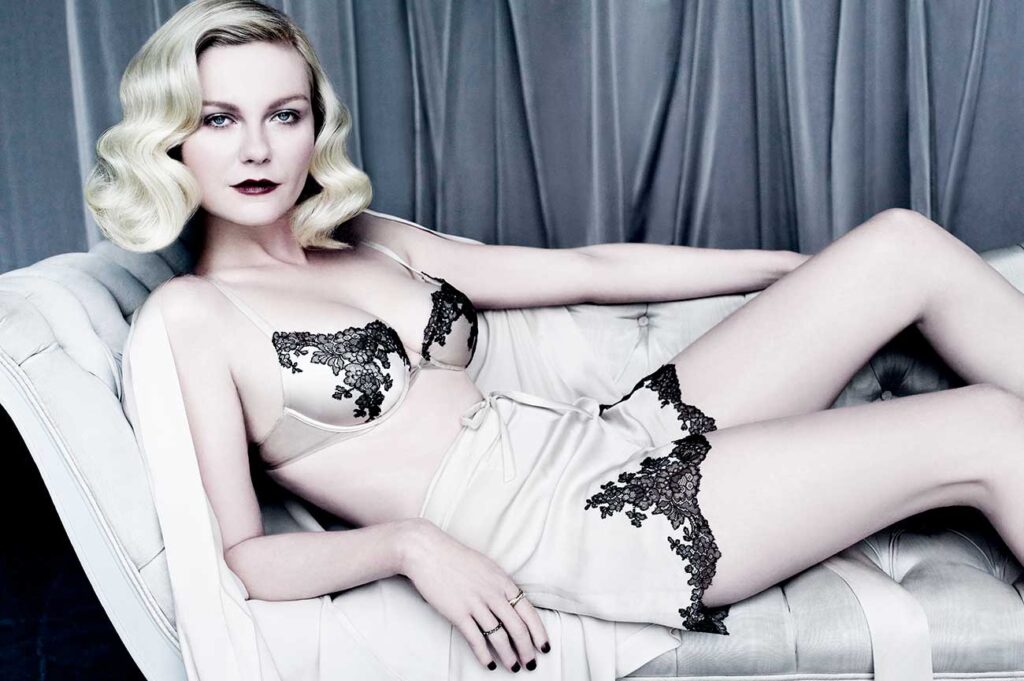
Tom Munro Studio © All rights reserved.
Dafna Navarro: Tell us about the very beginning. You were working for Steven Meisel just after you graduated from Parsons.
Tom Munro: I was initially accepted to Parsons in Paris, and they suggested I go to Parsons NY, where their main photography school was and presumably still is.
The mid 90′ was a great time to be in New York. It was still raw and, in part, run-down. I was fortunate to have had my time studying at Parsons, but it had been part of ‘the plan’, if you can call it a plan… To be an international photographer, I needed to think internationally, so I went to New York City rather than remain at The London College of Printing. I just knew that I needed to broaden my horizons.
After I graduated from Parsons, I started looking for an assisting job, and I desperately wanted to work for Steven Meisel. He had this unique ability to tell a story and to create a narrative within a fashion story. His pictures were the most exciting to me. The work for Steven was intensive at times. We ran in the studio, not walked and whispered, not talked.
We worked incredibly fast as assistants. An extremely well-oiled machine of which it was exciting to play a small part.
The first assistant was Darren Lew, and I think he had been working with Steven for about ten years. My position was as a full-time second assistant, and there would always be two other freelance assistants on the team, but we always used the same two, so we were kind of a family. I went to the studio every day, apart from the weekends. Darren taught me an enormous amount about lighting. The rest, I just watched, listened, and learned. I didn’t usually communicate with Steven, that wasn’t how things worked, but I felt a hundred percent appreciated.
When I went out on my own, I was, of course, influenced by Steven. It had been my life for two and a half to three years. But, working for Steven was not enough; I didn’t want to just be an assistant and, like Steven,
I wanted to be a photographer who encompassed the whole business, editorials & advertising, print & film.
Tom Munro Studio © All rights reserved.
Right: Adele. Vanity Fair Cover. 2016
Tom Munro Studio © All rights reserved.
Dafna Navarro: Several years after your graduation from the Parsons School of Design, Franca Sozzani of Vogue Italia became familiar with your work and decided to take you under her wings. Franca Sozzani is a legendary Editor in Chief; she was one of the actual revolutionary figures in the field. She understood the meaning of creating an entire narrative behind the photo shoot and the right way of making it accessible to the viewer.
And Franca chose to work with you! This is an unbelievable story! What can you tell us about it?
Tom Munro: I knew of Franca Sozzani from being at Steven’s studio. I decided to send Franca some pictures to ask for her opinion, explaining that I was one of Steven’s assistants and looking to shoot. Franca was kind enough to respond and asked if I would be interested in shooting some covers for Italian Glamor Magazine, with one condition…I had to ask Steven first! Fortunately, Steven was very encouraging.
Franca had a significant influence on my career; She had an essential role in my journey and remained so for 20 years until she sadly died. So I was just lucky, but I also pushed pretty hard, in a sort of humble and hopefully polite way, but I was determined to make it work. Later on, at the end of 1997, I managed to get an agent, and by March, I had already done the first photoshoot for British Vogue.
This fast development is undoubtedly thanks to the people who supported me along the way… fashion editors, art directors, magazine editors, model agencies, hair and makeup artists, and set designers, and I was fortunate to work with some of the best in the business, even when I first started. I was aware it was about having the right team around you.
Tom Munro Studio © All rights reserved.
Dafna Navarro: After almost ten years of editing the magazine and reading hundreds of interviews, I must say –
A ‘meteor’ development like yours is so rare. In 1997, your work was already featured on top magazines’ covers worldwide, and within three short years, by 2000, you were shooting for Anna Wintour at Vogue U.S.
How did this success make you feel?
Tom Munro: Dealing with this success that kind of happened overnight was, as times, challenging, particularly for an introvert, because suddenly there was a lot of interest, a lot of attention, which was all very new to me. It was both overwhelming and exciting at the same time; it was insanely busy. In my first year, 1997, I did 50 photo shoots. Given that there are 52 weeks in the year, and you take off summer and Christmas, I was shooting every week.
It was a pretty crazy schedule, given I was just starting out. Each month I waited for Vogue Italia or other publications to come out to see what everyone was doing and to see my own work.
It was exciting to get to the newsstand each month to see what was published. But on the other hand, I was incredibly self-critical because you wanted to be the best in the magazine, but the reality of whether I actually was or not depended on who else was in the magazine. It was a learning curve; sometimes, I was disappointed because it was hard not to compare myself. But that’s just part of being in a competitive industry and part of my initial insecurities. I needed to prove myself, and everything had to be perfect and had to work. And, of course, seeing your pictures in Times Square on a giant billboard was exciting and even a bit bizarre.
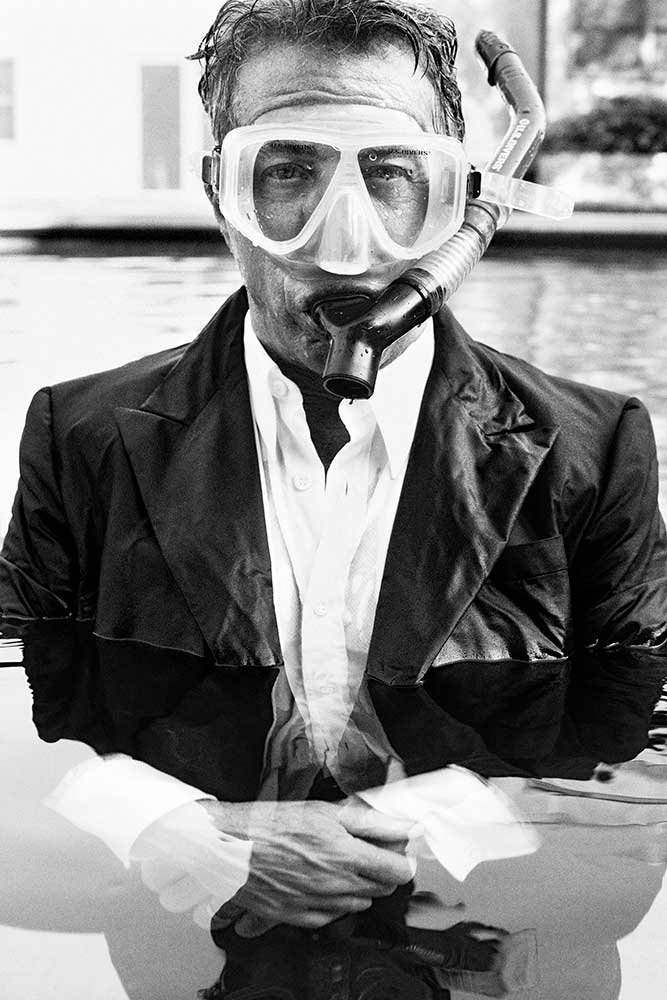
Tom Munro Studio © All rights reserved.
Dafna Navarro: What price do you pay from a more personal aspect? After 25 years of extensive career, do you feel you have sacrificed your personal life from this aspect of creating a family, marriage, and children?
Tom Munro: Romance & raising a family may have so far eluded me, or perhaps that’s the price one pays for living in one’s own creative head, often jet lagged from jumping on/off the not infrequent international flights…
At the end of the day, it’s a choice. When I left working for Steven, I was 32 years old, which was late compared to some of my contemporaries.
I had really changed my life considerably from my life in England. When I moved to New York, I focused on my new life and work. Geographically, my friends were in a different country. It was quite lonely at times.
While I was an assistant, I had very little money. I couldn’t just jump on a flight to England and go to a party. Later on, as my career got into a faster and more demanding rhythm, it became even more challenging.
There just wasn’t the time.
For example, I happened to be in Los Angeles, working recently; there was a friend’s memorial service that I was determined to get to in Scotland; I was hoping that the dates weren’t going to clash, but then the celebrity needed to move the shoot a couple of days later, and we ended up shooting on the same day as the memorial.
The priority had to be on the job. Certain clients have been very supportive and loyal towards me, and you can’t say I’ve got a social engagement to get to.
Throughout the years, I’ve missed many social events, which I would have loved to have gone to, but work always came first.
But, I’ve had an incredible journey and had a hugely fortunate start to my career. At the end of the day, it’s a choice.
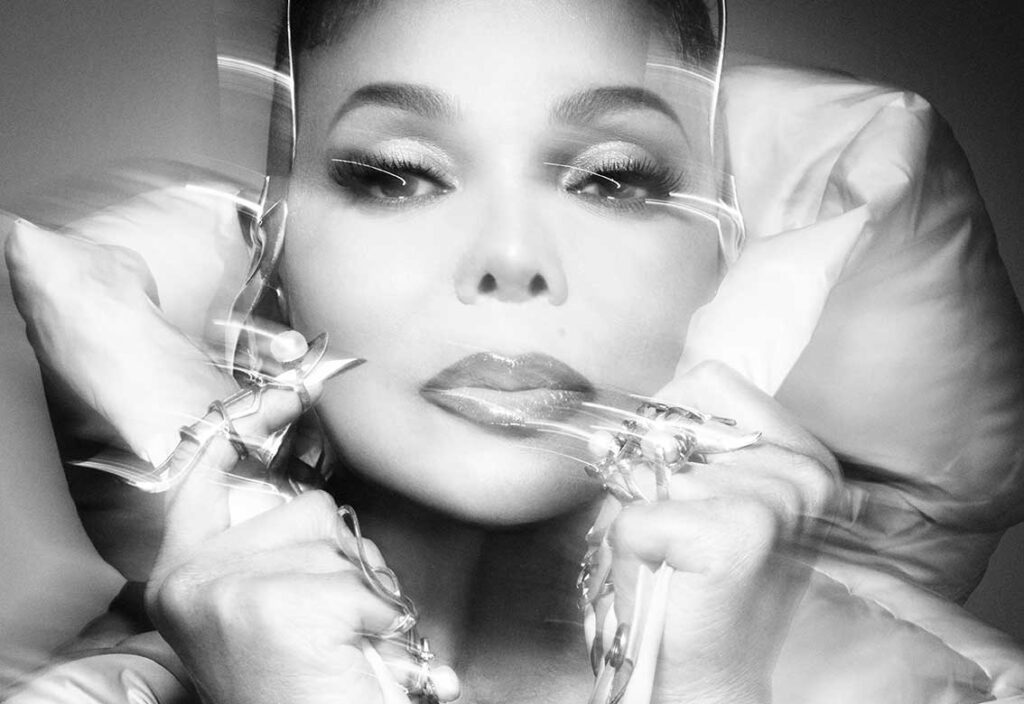
Tom Munro Studio © All rights reserved.
Dafna Navarro: A big part of becoming a good fashion & beauty photographer is communicating effectively with your model or subject. That will establish the foundation for a good photo shoot. Would you say you are gifted in communicating well with the subject?
Tom Munro: Obviously, different photographers have different ways of working and communicating. We are all individuals, some are extroverts, big characters, loud and noisy, and I’m probably the opposite, which is introvert, quiet, and maybe a bit more on the shy side. If it’s a celebrity that you’ve worked with multiple times, there becomes a sort of trust and, to some degree, a kind of unspoken communication. Obviously, familiarity helps, but equally, familiarity can at times be less productive, which is interesting. Some photoshoots are more challenging than others.
There’s much to achieve during a photo shoot in a very short amount of time. You can’t ask the celebrities to come back again, so it requires a great deal of mental focus required.
When you shoot someone for the first time, you have to calculate things quickly, the light, the position, to create the most powerful pictures.
What helped me, certainly with celebrity shoots, was gaining their confidence. Working digitally has been helpful in that respect; the pictures are instantaneous and, assuming they are happy with the results, feel they are in safe hands.
It’s a creative process.
Sometimes things might just not be gelling that day, and on other days everything comes together with ease.
You can have researched and created a fantastic set to shoot in the studio, which for some reason, whatever that reason is, the set doesn’t work, and you end up shooting the whole thing on a grey background. Or, you’re out on location, and the weather’s terrible, so you have to find a solution and make it work. Those decisions need to be made quickly. You can’t waste time wondering what to do; you just do it.
Fortunately, I haven’t had many incidences where the person I was photographing wasn’t having a good time, or the communication was challenging, so it’s pretty rare for me.
Tom Munro Studio © All rights reserved.
Dafna Navarro: What can you tell us about the latest beautiful campaigns with Cate Blanchett for Armani?
Tom Munro: Yes, I love working with Cate Blanchett, and I must mention that it’s pretty rare to have such a long relationship with one brand. I’ve worked for Mr. Armani on and off for 20+ years, the first shoot being in 2002. Mr. Armani, without doubt, has played a significant part in my journey, for which I am hugely grateful.
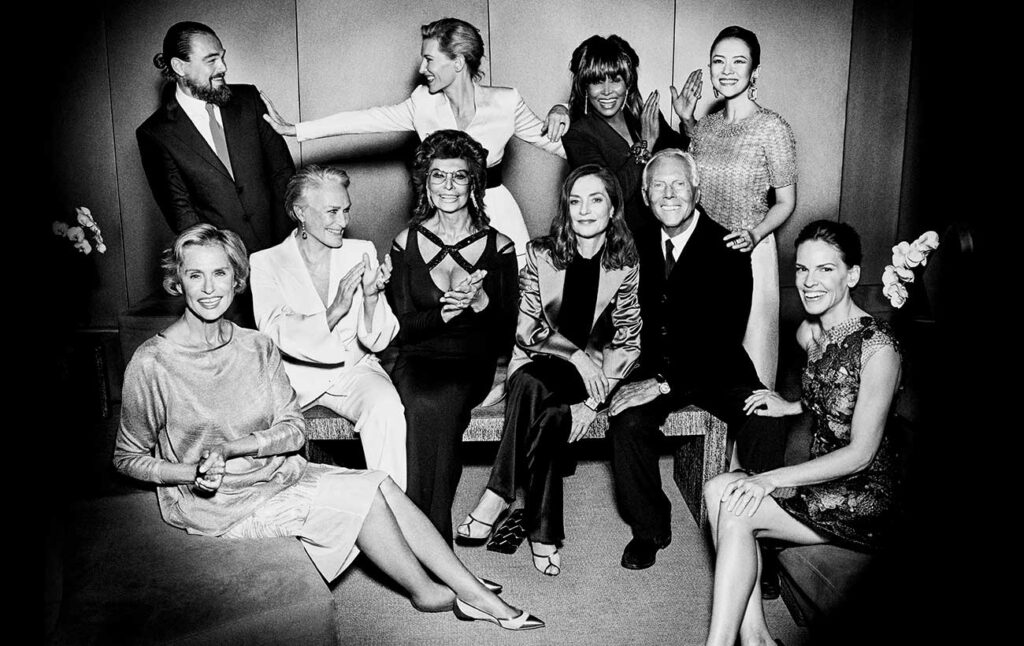
Left to Right: Leonardo DiCaprio, Cate Blanchett, Tina Turner, Glenn Close, Sophia Loren, Isabelle Huppert, Mr. Armani,
Jennifer Anne Garner, Lauren Hutton.
Tom Munro Studio © All rights reserved.
“Some photoshoots are more challenging than others. There’s much to achieve during a photo shoot in a very short amount of time. You can’t ask the celebrities to come back again, so it requires a great deal of mental focus”. – Tom Munro

Tom Munro Studio © All rights reserved.
Dafna Navarro: Let’s talk about Madonna,’ The Queen of Pop.’ In 2008, you started directing, débuting with Madonna’s music video ‘Give it 2 Me,’ the success of which led to four further film collaborations with Madonna, including ‘Die Another Day,’ in 2008 and ‘Justify My Love’ in 2012.
Your directing work in these video films is fantastic. How did this collaboration start in 2008? How would you describe the work with Madonna and her personality?
Tom Munro: Actually, the very first time I saw Madonna, other than in a magazine, was when I worked with Steven.
Steven was shooting a Versace campaign at Donald Trump‘s house, Mar-a-Lago.
These two white (it was Miami) stretch limousines arrived; out of one stepped Donatella Versace, and out of the other, Madonna.
Several years later, I think in 2008, Madonna’s stylist and costume designer, Arianne Phillips, suggested to Madonna that she work with me. Arianne and I had worked on various Italian Vogue shoots and knew each other well.
After some persuasion by Arianne, we eventually did our first editorial shoot together in 2008. Madonna liked the results and asked if I would like to direct a film – a music video – to which I replied, “I’ve never done any film,” and Madonna amazingly said, “Oh, you’ll be fine!”.
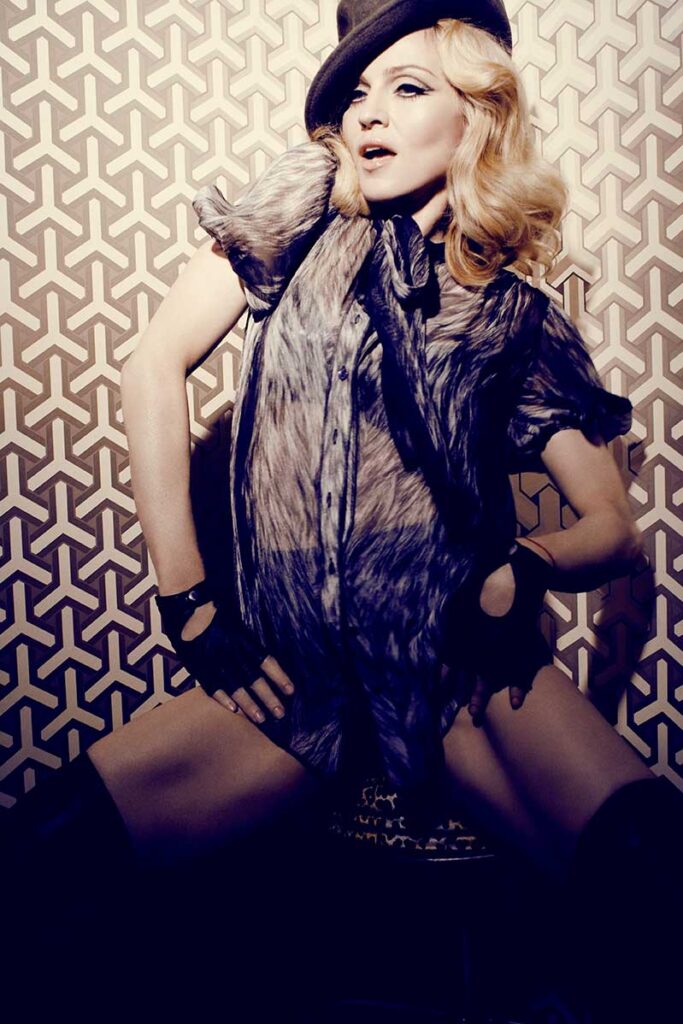
Tom Munro Studio © All rights reserved.
So that’s how the first music video came about: “Give it to me,” which included Pharrell Williams. It was a hugely exciting and inspiring time, and working with Madonna was an incredible experience. One of the most creative, hard-working, and inspiring people I’ve ever worked with.
The success of “Give It to Me” led to doing other shoots and film projects for her music tours, such as shooting for the “Sticky & Sweet Tour” and “Justify My Love”, all of which were done with Arianne. I think we did five music videos in total.
Madonna was very collaborative during these projects, Incredibly friendly and funny with a great sense of humor. Madonna has been a huge light in my career and, despite my inexperience, gave me my first opportunity to direct.
I can’t say I haven’t pinched myself a few times when the phone calls come from my agent, especially when the work is with someone you respect and admire. It’s not something you ever really get tired of.
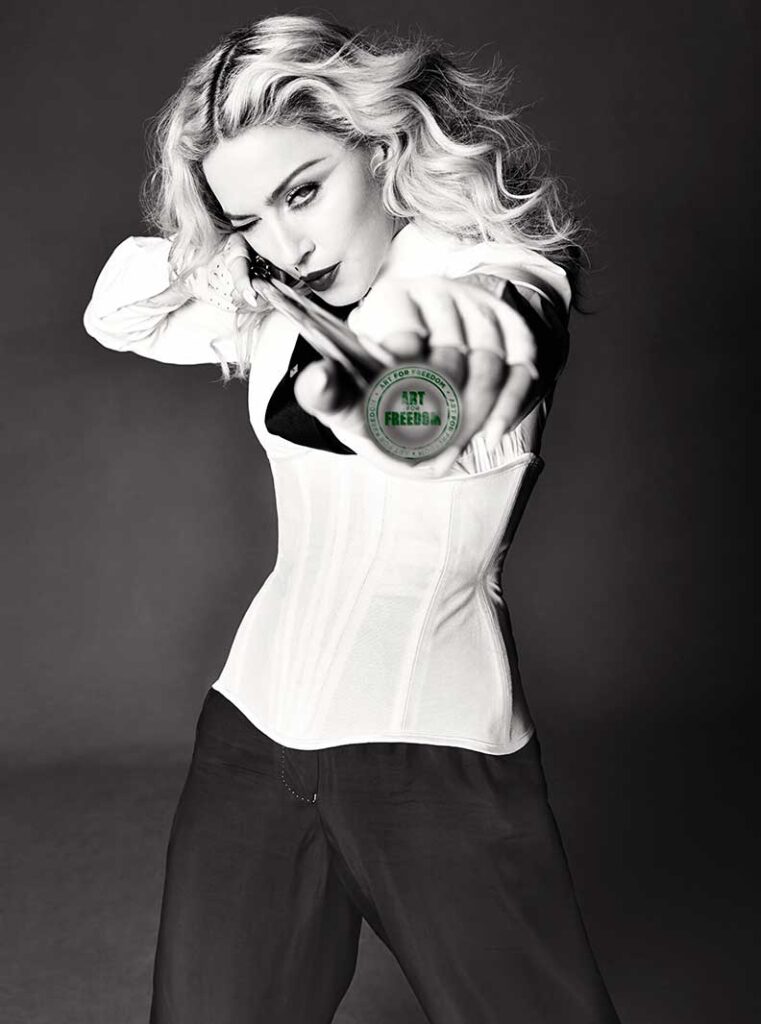
Tom Munro Studio © All rights reserved.
Dafna Navarro: Your Instagram is an absolute pleasure for all fashion and photography lovers. Great campaigns and some ‘behind the scene’ shoots. How do you think the social media channels changed the field? Is it easier for a young photographer to become successful than it was back in the 90s?
Tom Munro: Personally, I am not a fan of Instagram; I’m not sure that social media platforms are the best thing to have happened for photography. It’s great that it has provided a platform and opportunities to younger people in the same position I was in 25 years ago.
Instagram is an excellent way of promoting your business and your product. Whether you are selling something or taking pictures, it’s a commercial tool, and that’s all it is for me.
I’m not someone who puts their entire private life on Instagram.
I just remember when I started and, in danger of sounding like an old, grumpy photographer, but it was still quite a small industry. Being a photographer was pretty special. I grew up in the countryside of England, so the idea of being a photographer and moving to New York City was a bit like flying to the moon; I was setting my sites pretty high.
Dafna Navarro: What advice do you have for the young photographer trying to make his way in the fashion & beauty photography field today?
Tom Munro: The world’s changed a lot since I started, but I definitely believe from my own experiences that if you really want something bad enough and you are prepared to work hard to achieve it, you can make things happen in your life.
Fortunately, there’s much more acceptance today regarding sexual identity, and I wish one could say the same about racism, but that seems tougher to overcome. Nevertheless, the equality of people is a big thing, whether you are male or female, whatever the color your skin is, or whatever your sexual orientation is.
So, it’s an exciting time to be a photographer, particularly for the younger generation who are living that life. It’s an exciting and inspiring movement to be part of in terms of getting started, with a more diverse and political tone.
And from a more personal aspect, a piece of essential advice to someone starting out, if they were to attain overnight success, it’s important to maintain a balanced life. Of course, it’s important to work hard and to achieve, but it’s also important to take the time to allow yourself to step back, think about what you are doing, recharge, and then go again. There’s no rush if you are in it for the long term.
VISIT:
Website: www.tommunro.com
Agency: www.2bmanagement.com/artists/tom-munro
Instagram: @tommunrostudio

